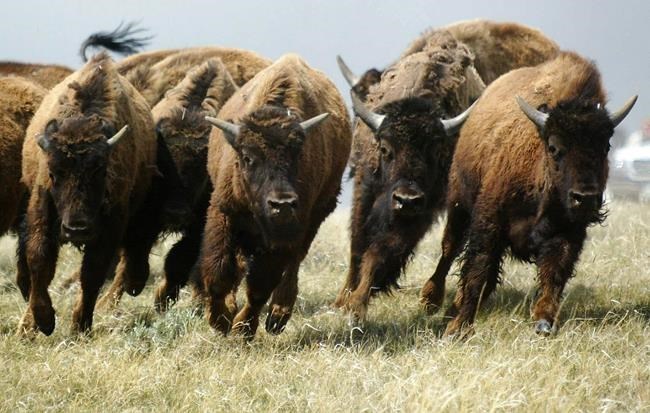The collapse of the teeming bison herds that once blackened the prairie was an economic catastrophe that still affects those who once depended on them, new research suggests.
"Economic opportunity is determined in part by history," said Donn Feir, an economic historian at the University of Victoria and one of three authors of a recently published paper on the lingering economic impact of that near-extinction.
"When you look at the landscape of economic development and Indigenous economic growth in Canada and the U.S., you have to keep in mind that history is still very much with us."
Feir and her colleagues used data collected by long-ago government agents and anthropologists to compare how the loss of the bison affected First Nations that depended on them with those that didn't. They conclude that loss, together with reduced access to institutions such as banks, marked those nations physically and economically.
"Those historical injustices are being perpetuated today through poverty traps," said Feir, whose paper is published in Oxford University Press' Review of Economic Studies.
Tasha Hubbard, a filmmaker and native studies scholar at the University of Alberta, said the paper's conclusions are valid -- as far they go.
"This is part of it," she said. "(Loss of bison) was a hugely negative impact on Indigenous people."
But she cautioned that ongoing loss has to be seen in a larger context. To Plains First Nations, bison were a cultural as well as an economic resource and their loss went beyond property and jobs and incomes.
"Yes, economy," Hubbard said. "But also wellness."
As many as eight million bison roamed the plains in the mid-19th century. Plains First Nations depended on them for food, clothing, trade goods, homes and tools.
Bison made them rich. Anthropologists say their living standards and lifespans were comparable to contemporary Europeans.
But by the turn of the century, all but about 500 bison had been slaughtered -- a collapse that happened in some regions within a decade.
To examine the effect of that collapse, the authors looked at data collected between 1889 and 1903 from about 9,000 Indigenous people across the continent. They found bison-dependent nations lost, on average, more than two centimetres in height -- a commonly used proxy for measuring poverty, Feir said.
Other sources reveal that in the early 20th century, infant mortality was higher among formerly bison-dependent nations. A U.S. survey from 1900 found men in those nations were 19 percentage points less likely to have an occupation.
People lost the bison around the same time they were being moved onto difficult-to-leave reservations. As well, those bison-dependent nations had relatively fewer nearby banks than other nations, Feir said.
"Imagine all oil and gas evaporated from North America and you told everyone who lived in Houston (Texas) that they had to stay in Houston and couldn't borrow any capital from banks and then said, 'Now feed yourself.'"
The result, said Feir, would be massive job loss, drops in production and external trade, lack of capital for people to retrain or launch new ventures and an end to people moving in with new ideas and resources.
"Because there was this large economic shock and you restricted the ability of people to adjust to this shock, you end in a poverty trap."
That trap persisted over the decades, Feir argues.
American data suggests the bison-dependent nations lagged behind other First Nations in manufacturing and employment industries. In-migration was lower until the 1980s. That data suggests economic hardship persists, with per capita income 25 per cent lower for bison-dependent nations than other First Nations.
Although the paper relies heavily on U.S. data, Feir said the same patterns apply in Canada. Earlier working versions of the paper included more Canadian sources and similar threads emerged.
"We did see very similar impacts," she said.
Still, Hubbard warns, that's not the whole story. Bison were a big part of how Plains First Nations related to the world and the herds underpinned much more than getting and spending.
"Wealth is not accumulation," Hubbard said. "Wealth is overall well-being and there's a need to think expansively about what Indigenous economies mean."
The authors used statistical techniques to adjust for the impacts of factors such as where reservations were located, local self-governance, railways or European settlement. The dominant factor in the economic history of bison-dependent nations remained the loss of their primary resource and the restrictions placed on their ability to cope.
"No one set of regressions or data findings is definitive," said Feir.
"But I'm convinced that bison and its loss and the restrictions on mobility and access to capital is what drives this persistent difference."
This report by The Canadian Press was first published Sept. 16, 2023.
Bob Weber, The Canadian Press

